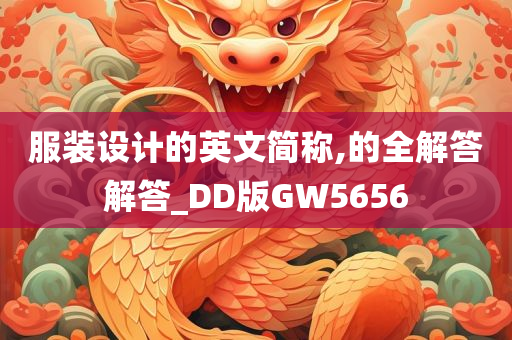《服装设计:典解版新正实》是一本深入浅出的服装设计指南,涵盖了从基础理论到实际操作的全面知识。本书以实用性和易懂性为原则,详细解析了服装设计的核心概念和技巧,旨在帮助读者全面了解服装设计的艺术与科学。
Fashion Revolution: Exploring the Art of Clothing Design in the New Era
In the ever-evolving world of fashion, the term "clothing design" stands as a beacon of creativity and innovation. It is a discipline that transcends mere aesthetics, delving into the realms of culture, sustainability, and personal expression. In this article, we will embark on a journey through the "classic version" and the "new reality" of clothing design, exploring how the art form has evolved and what it means to design for the modern era.
The Classic Version: A Timeless Craft
Clothing design, in its classic version, is a time-honored craft that dates back centuries. It is rooted in the principles of tailoring, pattern-making, and the meticulous attention to detail. In the past, designers like Charles Frederick Worth, considered the father of haute couture, and Coco Chanel, who revolutionized women's fashion, set the stage for the art of clothing design.
During this era, clothing design was a form of artistry that was reserved for the elite. It was a meticulous process that required a deep understanding of fabrics, cuts, and silhouettes. The classic version of clothing design was characterized by its exclusivity, with each piece being a unique creation tailored to the individual.
The New Reality: Fashion as a Global Conversation
In the new reality, the landscape of clothing design has transformed dramatically. With the advent of globalization, fashion has become a global conversation, where ideas and styles are exchanged at an unprecedented pace. The internet has democratized fashion, allowing designers from all corners of the world to showcase their talents and reach a global audience.
This new reality of clothing design is marked by several key trends:
1、Sustainability: As awareness of environmental issues grows, sustainability has become a central focus in fashion. Designers are now incorporating eco-friendly materials, such as organic cotton, recycled fabrics, and natural fibers, into their collections. This shift towards sustainability is not just a trend but a movement that aims to reduce the fashion industry's environmental footprint.
2、Digital Design: The rise of digital technology has revolutionized the way designers create and showcase their work. CAD (Computer-Aided Design) software has become an essential tool, allowing designers to visualize and refine their designs before they are even brought to life. This digital transformation has also opened up new possibilities for customization and personalization.
3、Collaborations: The new reality of clothing design is characterized by a willingness to collaborate. Designers are now partnering with artists, musicians, and even other designers to create limited-edition collections that blend different creative disciplines. These collaborations not only push the boundaries of fashion but also create a sense of community and shared purpose.
4、Ethical Production: With the increasing awareness of labor rights and ethical production practices, designers are now placing a greater emphasis on the conditions under which their garments are made. This means working with factories that adhere to fair wages, safe working conditions, and responsible manufacturing processes.
Understanding the Art of Clothing Design
To truly understand the art of clothing design, one must delve into the creative process. This process involves several key steps:
1、Inspiration: Every great design starts with inspiration. Designers draw from a wide range of sources, including nature, art, culture, and personal experiences. This inspiration is what fuels their creativity and drives their design decisions.
2、Research: Before beginning a new project, designers conduct thorough research to understand the current trends, consumer preferences, and the technical aspects of their chosen materials.
3、Sketching: The next step is to translate the initial inspiration into sketches. These sketches serve as a blueprint for the final design, allowing designers to experiment with different silhouettes, colors, and textures.
4、Pattern-Making: Once the sketches are finalized, the pattern-making process begins. This involves creating a pattern that will guide the cutting and construction of the garment.
5、 prototyping and Sampling: Prototypes are made to test the design's fit, functionality, and overall aesthetic. This stage is crucial in ensuring that the final product meets the designer's vision.
6、Construction: The construction process involves bringing the design to life. Skilled seamstresses and tailors work together to cut, sew, and finish the garment.
7、Presentation: The final step is to present the completed collection. This can be done through fashion shows, runway presentations, or online exhibitions.
Conclusion
In conclusion, clothing design is an art form that has evolved significantly over time. From the classic versions of haute couture to the new reality of global fashion, designers continue to push the boundaries of creativity and innovation. By embracing sustainability, technology, collaboration, and ethical production, the art of clothing design is not only thriving but also becoming more inclusive and responsible. As we move forward, it is the designers who embrace these new realities who will shape the future of fashion.
转载请注明来自一砖一瓦(北京)企业咨询有限公司,本文标题:《服装设计用英文,典解版新正实_了解版》



 京ICP备2022029848号-1
京ICP备2022029848号-1  京ICP备2022029848号-1
京ICP备2022029848号-1
还没有评论,来说两句吧...